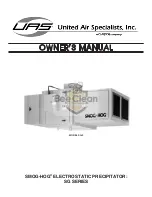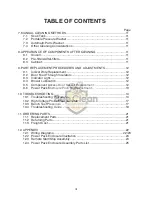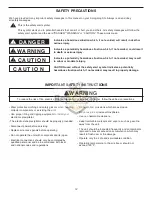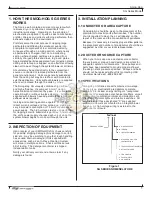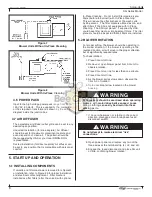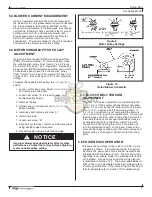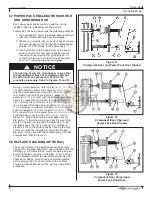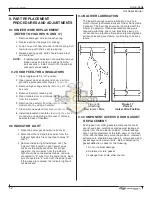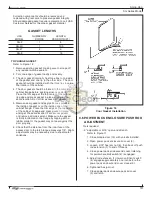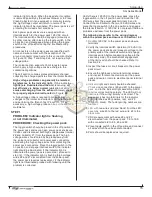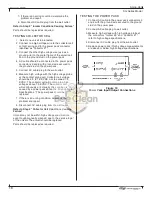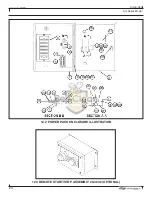
9
revised 09/09
Smog-Hog
SG Series Model
missing?), ionizer weld nut (missing?), ionizer standoff
insulators (contaminant build up) and ionizer wires
(contaminant build up? missing?), repair or replace.
ionizer wires should be taut and centered between
ground plates. Ground plates between each ionizer wire
should be straight and parallel. inspect the collector
cell section of each unicell, noting the condition of the
contact spring (distorted? bent? missing?) cell contact
screw (missing?), cell plates (bent? warped?) should
be parallel and straight, repair or replace. cell hot
plates (smaller dimensional plate) should be centered
between ground plates (larger dimensional plate).
cell plates should not have contaminant bridging
between the cell plates or at support structure corners
or the triangular insulators. inspect filters, noting the
condition (contaminant build up?, media separation?,
bent frames?) should not have contaminant build
up restricting airflow, repair or replace. Module
drain sumps should not have moderate to extreme
contaminant build up or an accumulation of wash water
if equipped with In Place Cleaning. Unicell module
support tracks should be free of contaminant build-up
for ground contact. Module and access doors gaskets
should be in-place and in good condition.
5.9 PLACING SG ONLINE
Depending upon job specifications or other
requirements, the SG may be placed on line by a
customer supplied switch, or uaS remote Start/Stop
assembly. the indicator light on each power pack
enclosure should be illuminated. the power pack
enclosure toggle switch should be in the “up” position
for the indicator light to be illuminated. if the indicator
light is not illuminated after checking the toggle switch
or the indicator light is flashing, refer to Section 10
Troubleshooting. For operation of auxiliary system
equipment, refer manufacturer’s owner’s instructions for
proper operating procedures.
6. MAINTENANCE AND MANUAL
CLEANING
Figure 14
Grounding the Collecting Section
Figure 15
Grounding the Ionizing Section
!
CAUTION
The SG unit should be inspected frequently and
collected contaminant removed from the system
regularly to prevent excessive accumulation
which may result in a flashover or risk of fire.
6.1 NORMAL MAINTENANCE
once the unit is operational, periodic maintenance is
necessary to assure proper performance. follow a
regular pattern of unit observation and log abnormal
conditions. Since units reflect the process under control,
maintenance patterns will vary accordingly.
6.1.1 CHECK POWER PACK ENCLOSURE
INDICATOR LIGHTS
the SG should be monitored daily by observing that
the indicator light is illuminated to each power pack
enclosure. occasional arcing (flashing of an indicator
light) is normal. an established arcing condition or dead
short condition (continuous flashing of an indicator light)
or the indicator light is not illuminated is not normal
should be corrected.
6.1.2. CHECK COMPONENT APPEARANCE WEEKLY
a visual of a module could identify problems such
as moderate to extreme contaminant build up to the
unicells even though the indicator lights are illuminated.
this will be helpful in scheduling a manual cleaning
of the components, refer Section 6.2. to check the
condition of the unicells, place the SG off line. open
the module door and perform the grounding procedure,
refer to figures 14 and 15, inspect the condition of
the unicells, filters, door feed-thru insulators and
interior of the cabinet. Experience will dictate whether
contaminant build-up is excessive. Contaminant build
up will decrease high voltage to the ionizer and collector
cell circuit. When accessing a module, always clean
the two door feed-thru insulators.
The following should be inspected.
inspect the ionizer section of each unicell, noting
the condition of the contact spring (distorted? bent?

